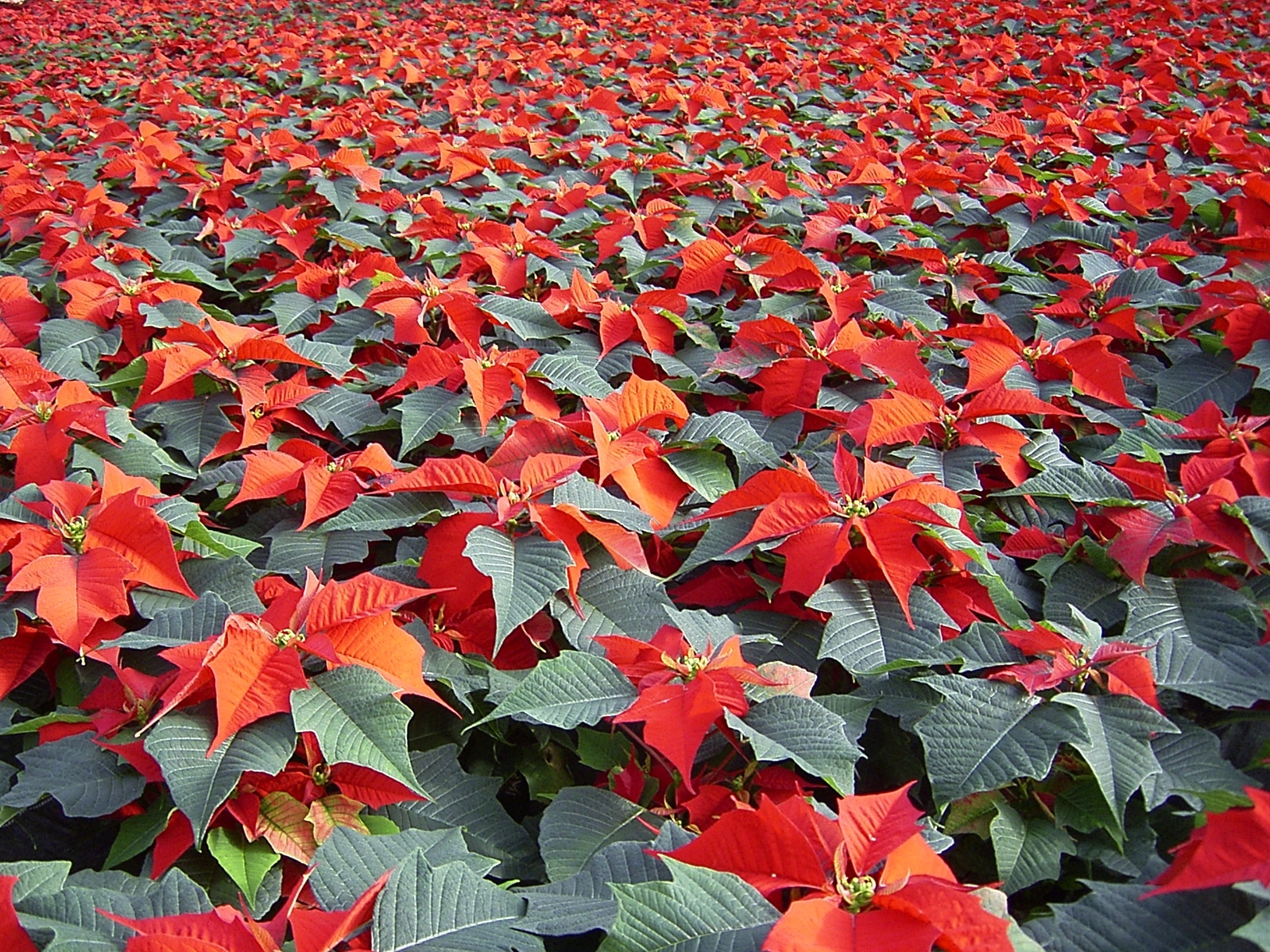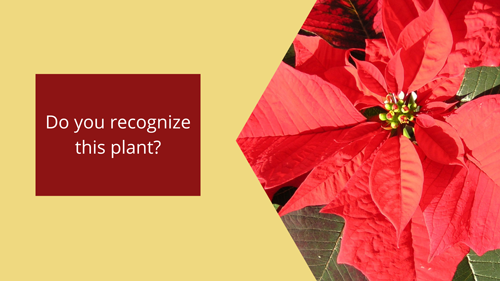
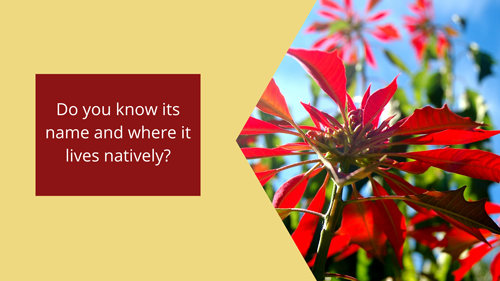
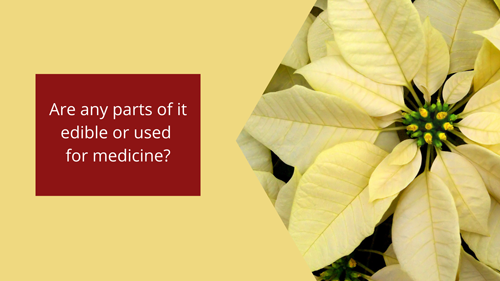
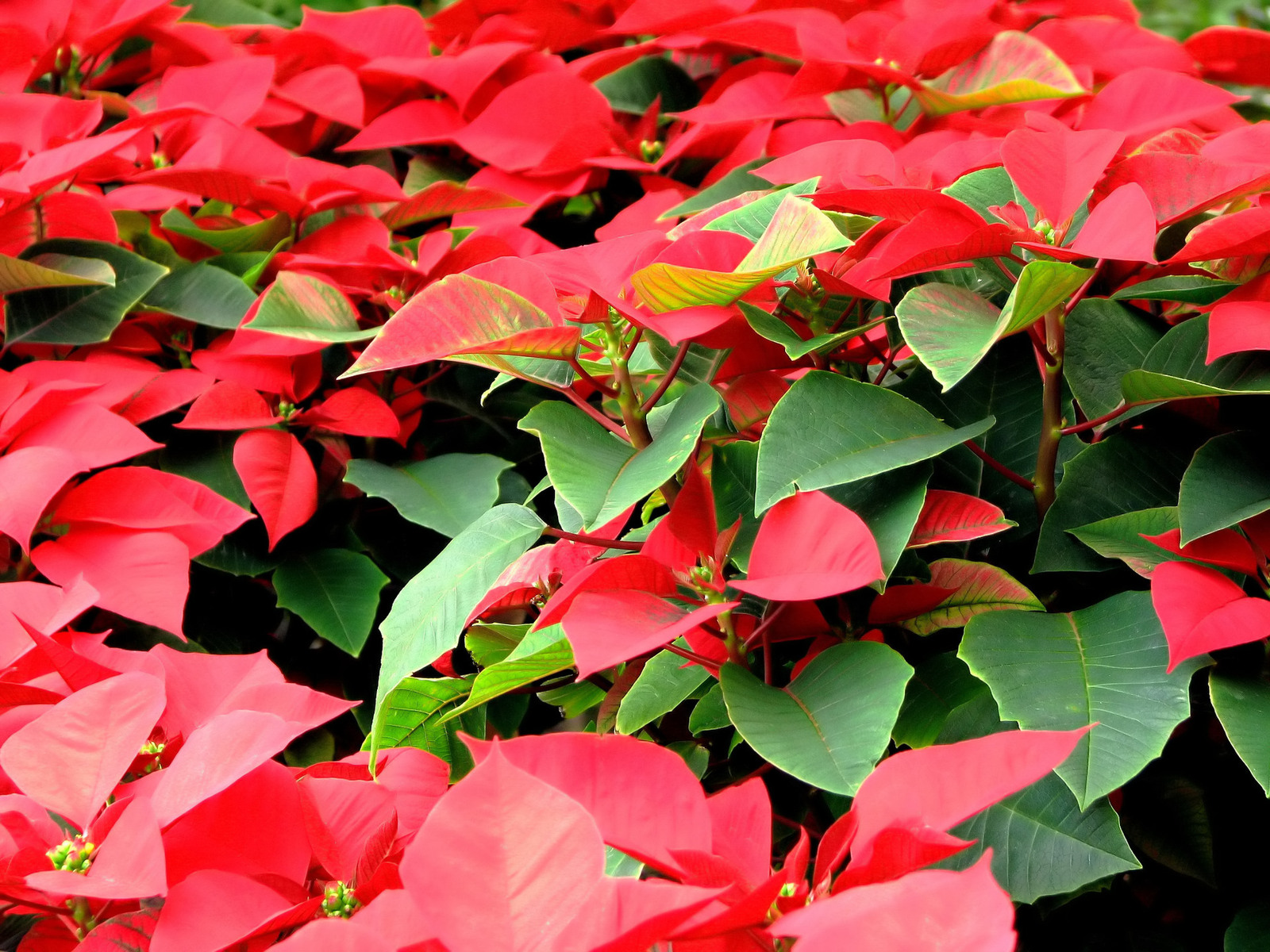
I’ll bet 99.9% of you recognized this plant as the Poinsettia, but I’ll bet many fewer know that it was originally a desert plant. That’s right, the poinsettia started out as a humble weed growing wild in Central America, specifically in an area known as Mexico Taxco del Alarcon. The original plant was not as flamboyant nor varied in color as those available now in flower shops, but it does have enough similarity to be recognizable as the native version of the Christmas Flower.
The poinsettia has many nicknames. Before it became famous as a holiday symbol, it was known as the Mexican Flame Leaf and the Winter Rose because it blooms in December.
There are at least two stories about how this ordinary plant became associated with Christmas. One is that the missionary priests and friars who were seeking to convert the native peoples of Mexico to Catholicism used the native poinsettia as a teaching tool, much as St. Patrick is reputed to have used the three-leaf clover. In the case of the poinsettia, the shape of the flower represented the Star of Bethlehem which led the wise men to the baby Jesus, while the red leaves symbolized the blood of Christ and the white his purity.
The second version, while no less religious, puts the focus on Mexico. In this story, a young girl (Pepita or Maria in some versions) is heart-broken because her family is so poor that she doesn’t have anything to put on the altar for Jesus. Her brother encourages her that it’s not what you give, but the intent with which you give it. So, she picks some weeds from along the roadside, forms them into a little bouquet, and places them shyly on the altar. And then, the entire congregation is surprised by a Christmas miracle when the leaves of her dull little weeds turn to brilliant red and green. In Mexico, the name of the Poinsettia is both the Christmas Star and Flores de Nocha Buena (Flower of the Holy Night).
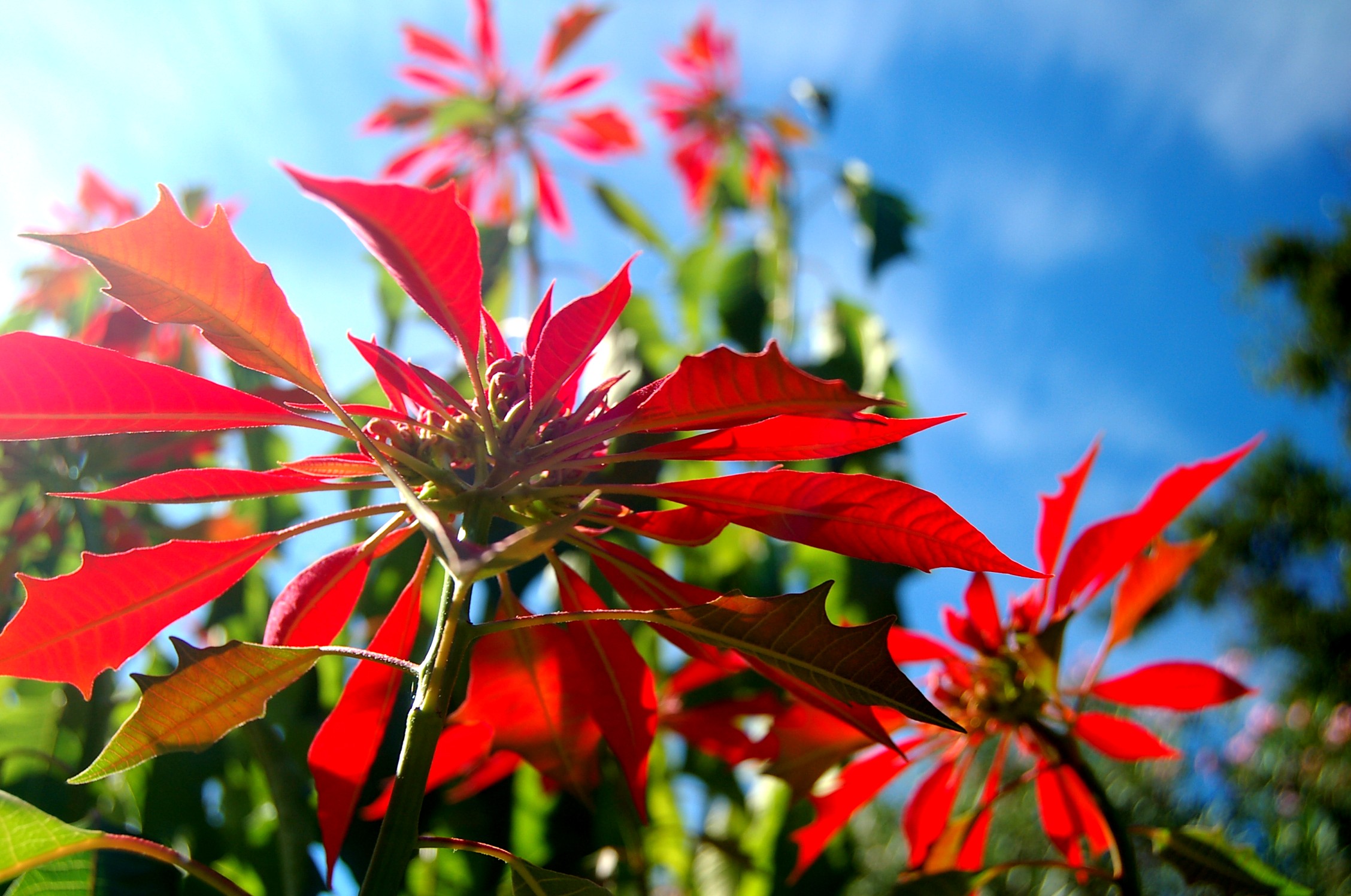
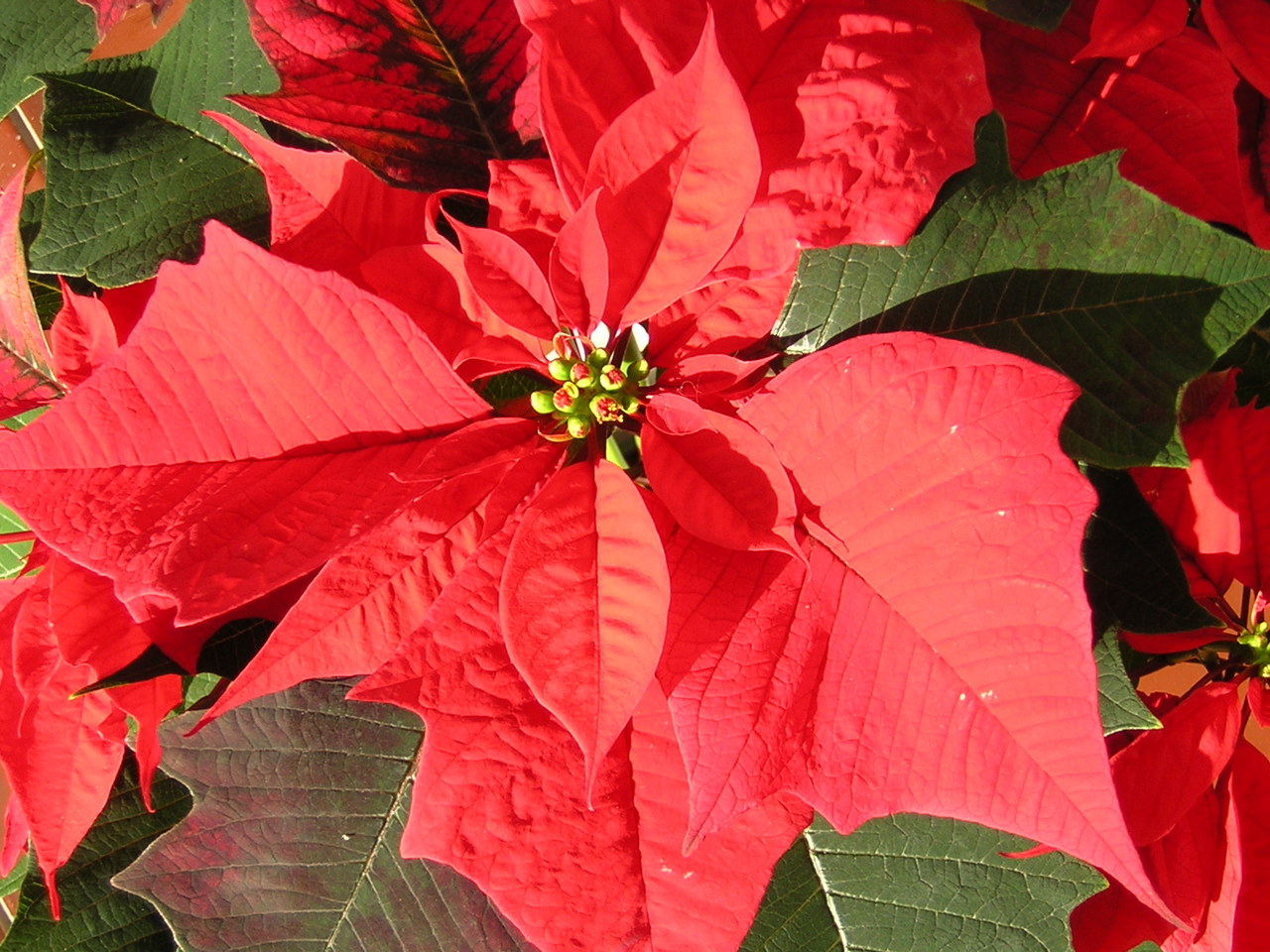
Regardless of which theory you like, the man who actually put the poinsettia on the map and gave it the name by which we know it was Joel Roberts Poinsett. He was the first U.S. Ambassador to Mexico and coincidentally an amateur botanist. He became interested in the plant and sent clippings back to his home greenhouse in South Carolina in 1825. He grew the plants and gave them as holiday gifts to his friends. Eventually, some samples reached Pennsylvania where they were first sold commercially. Did you know that the U.S. has an official National Poinsettia Day every year? It’s December 12, to commemorate the date of Joel Poinsett’s death.
The popularity of the poinsettia soared, and today they are sold all over the world. In the beginning, they were only sold as cut flowers, but in the early 1900’s, people began buying the whole plants. At first, the colors were only red or white, but now pink, creamy yellow and variegated varieties are common. They are not only widely used as Christmas decorations in the U.S. but are also the number one Christmas plant in the United Kingdom and other countries. For trivia fans, you might be interested in knowing that the poinsettia has been adopted as the national emblem of Madagascar where the continuously warm climate causes them grow into huge trees.
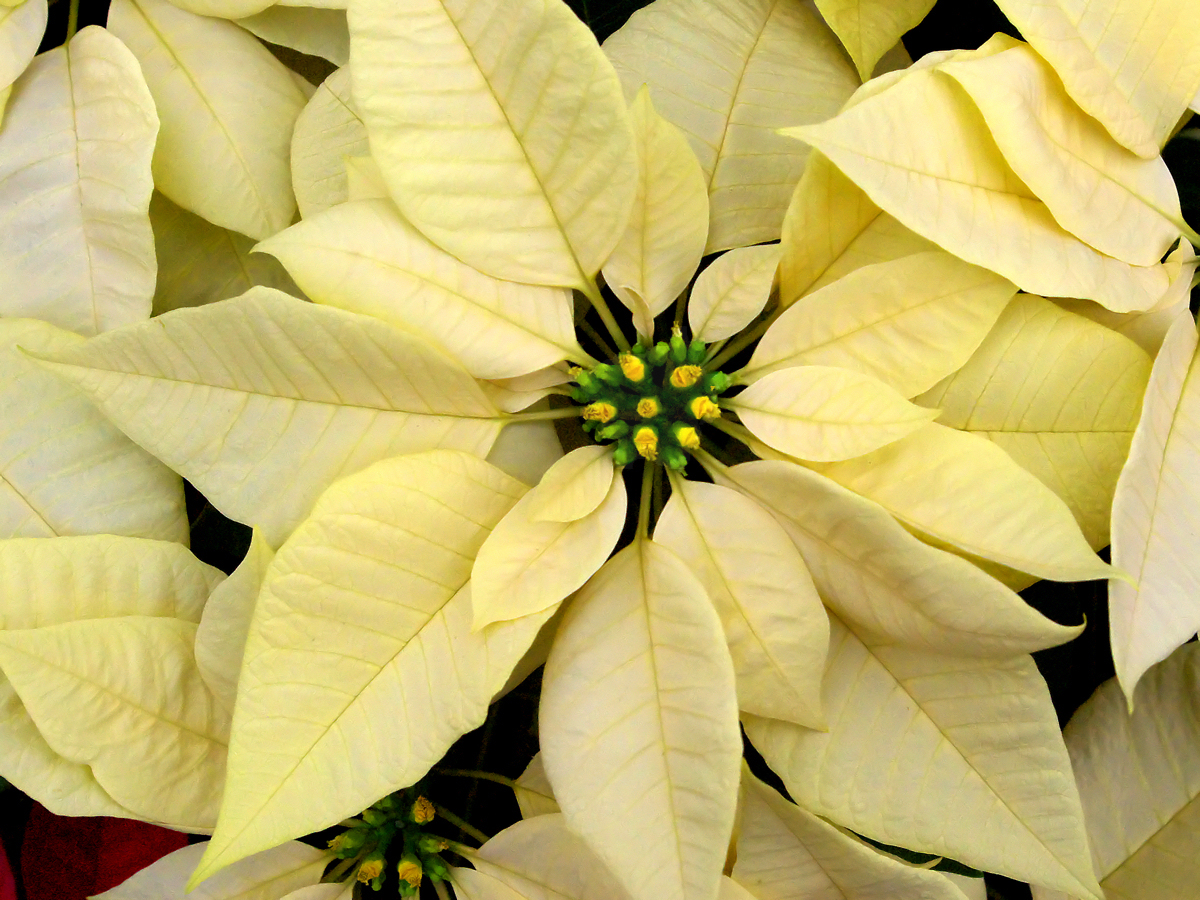
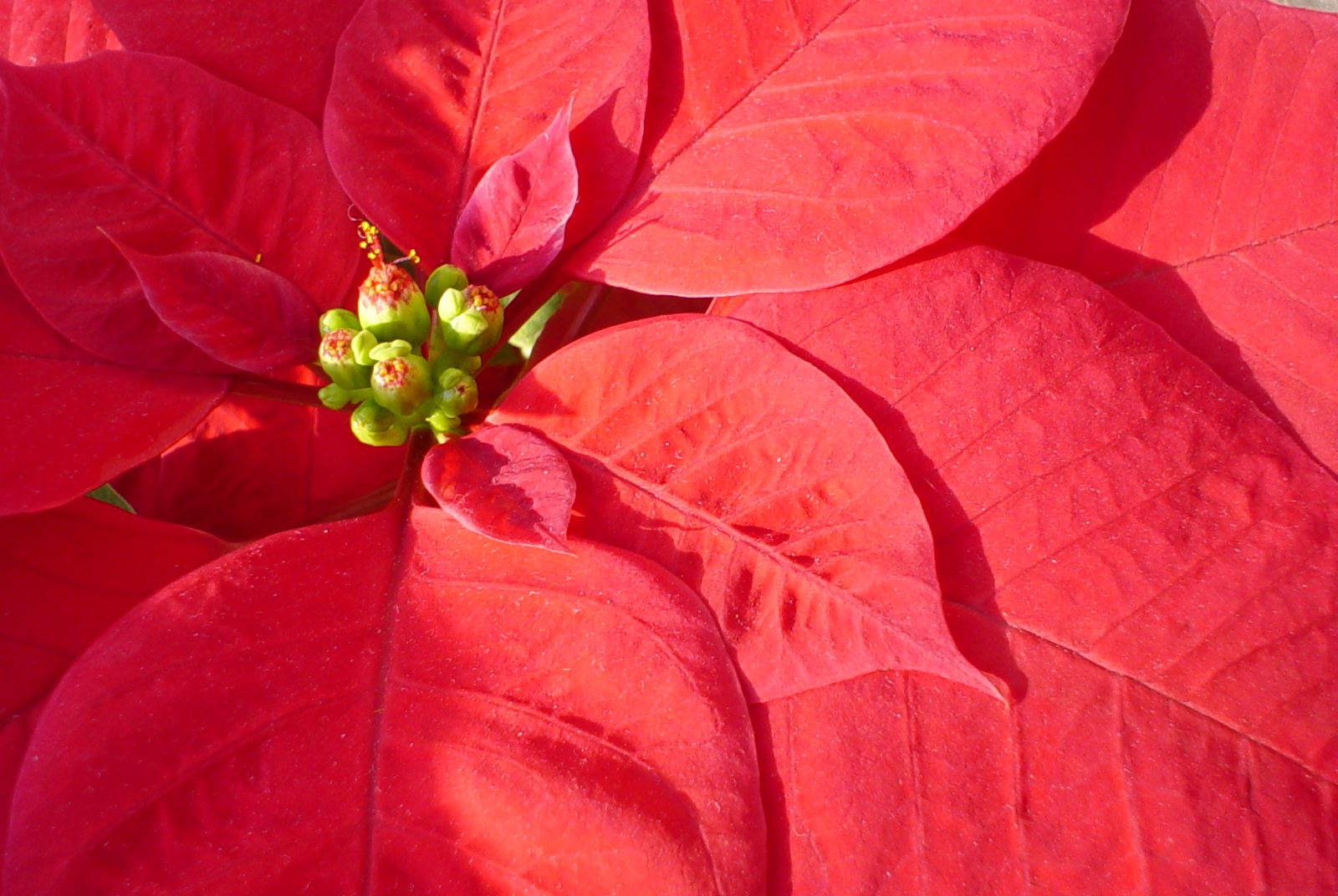
Most people think that the flowers are red, and the leaves are green, but actually both the red and green are modified leaves called bracts. The flowers are the small yellow-green clustered buds in the center termed cyathia. If you wish to buy a healthy poinsettia, then look for undamaged bracts and tightly closed cyathia.
The Aztecs were the first to cultivate the poinsettia from the 14th to 16th centuries. They used the leaves to make purple dye for clothing and the milky sap for medicinal purposes, especially treating fevers. Their word for the poinsettia was cuetlaxochill and they saw the plants as symbols of purity.
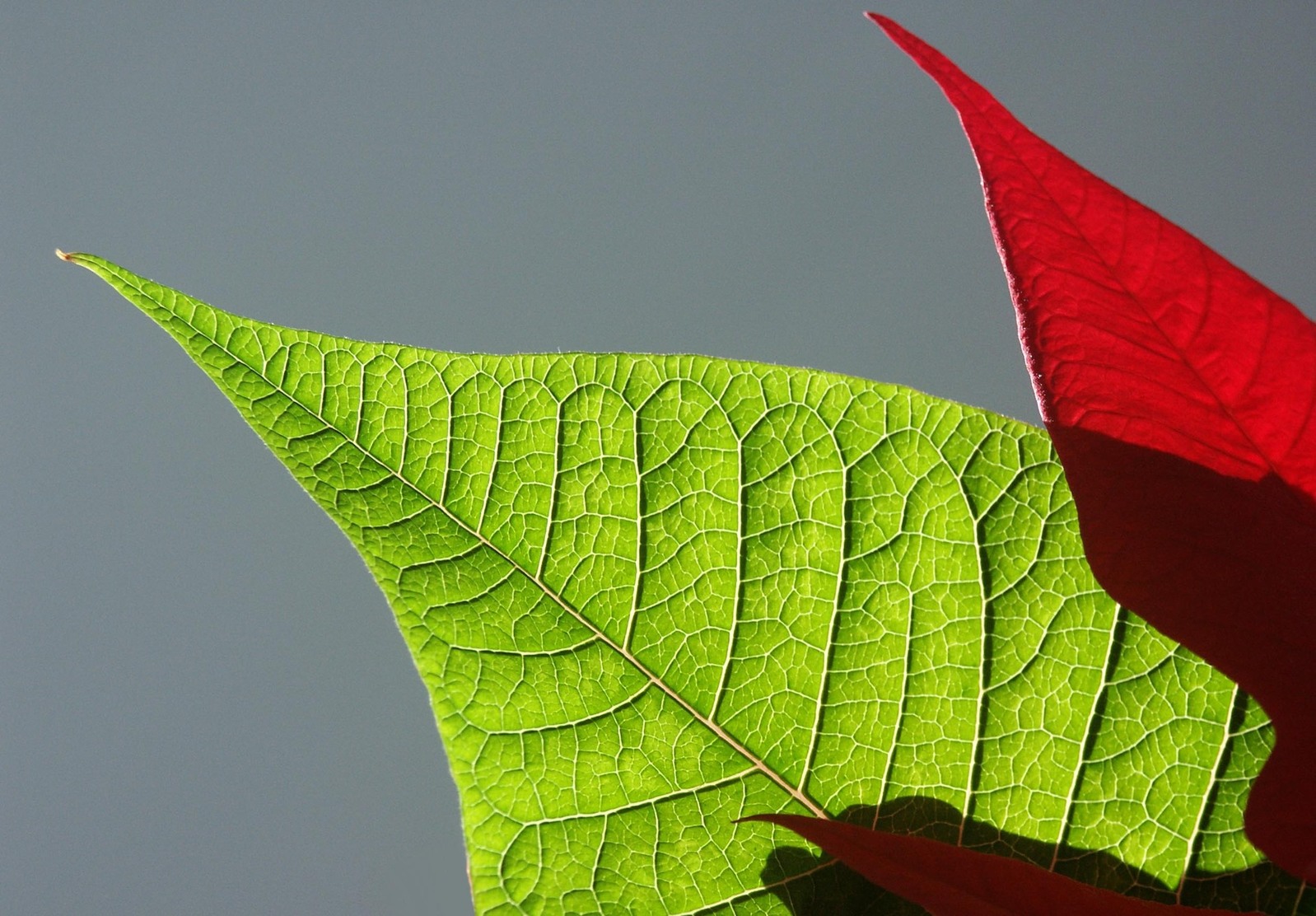
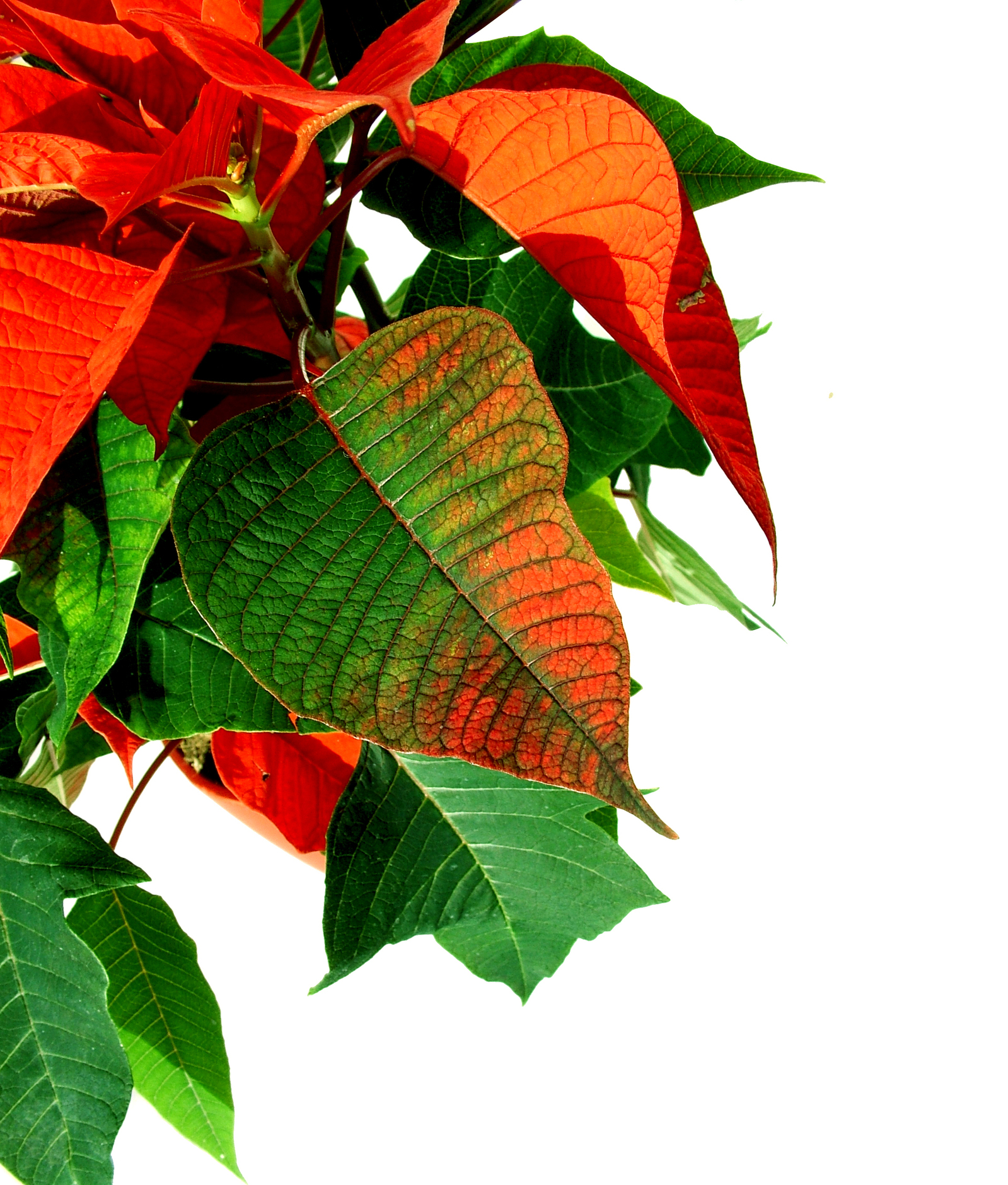
The poinsettia, like most other desert plants, has a way to defend itself from being eaten to the ground, but unlike the cactus, it doesn’t use spines. It uses instead its milky white sap which makes its leaves taste bitter and can induce indigestion, so browsing animals tend to leave it alone. The sap, by the way, is a form of latex because the rubber tree is the poinsettia’s closest relative.
The poinsettia has gotten a bad rap as “extremely poisonous” even though this label has been disproved several times by centers for poison control. In 1919, authorities mistakenly blamed the death of a young girl on ingesting some poinsettia leaves and the label has stuck ever since. A person might have an allergic reaction to the sap if he or she was also allergic to latex, and the leaves are designed to discourage you from eating them, but none of that equates to highly poisonous.
In normal years, nearly 500 million poinsettias world wide hit the market for the holiday season. Mexico’s “Christmas gift to the world” is undoubtedly a big seller, which is not a bad feat for a humble roadside plant.
HAPPY HOLIDAYS!
